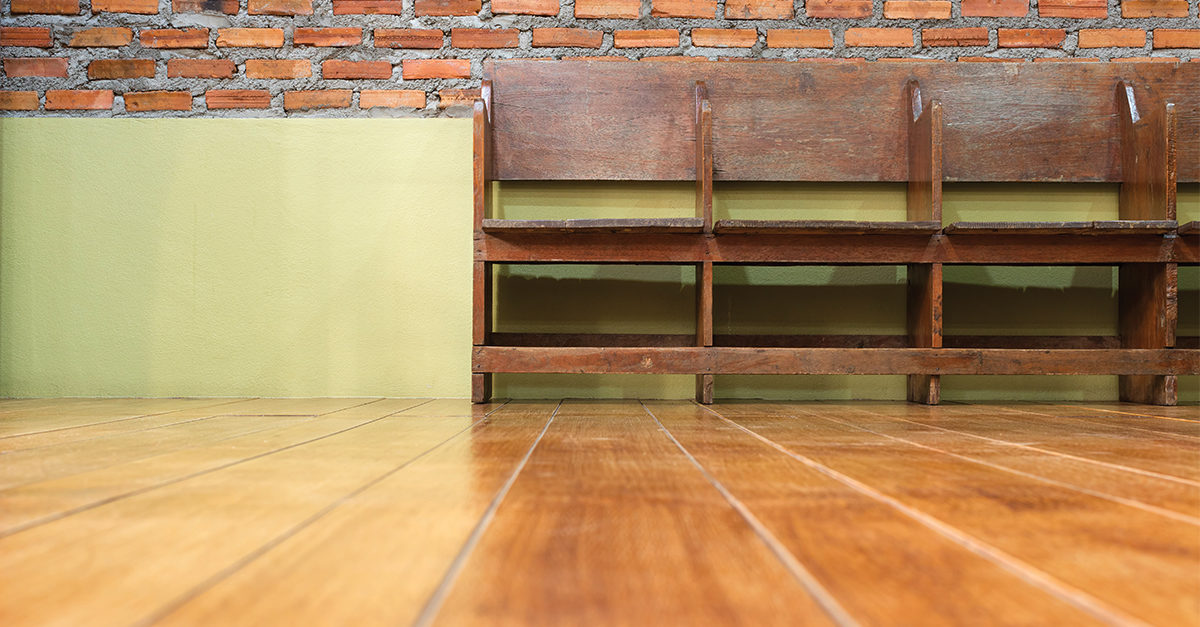Summer cleaning, often termed “project cleaning,” can be a successful component of an effective cleaning program. On the other hand, project cleaning can also result in unexpected complications. However, there are ways to ensure project cleaning is successful, efficient, and exceeds the expectations of the customer.
A Floor Care Example
For purposes of this article, let’s focus on stripping and refinishing the floor of a multipurpose room at an elementary school site. The multipurpose room is approximately 4,000 square feet of vinyl composition tile (VCT), and has five coats of floor finish from last year’s project.
During the planning phase, the day custodian and the custodial supervisor sit down to discuss this project. The day custodian has brought along a school calendar that indicates free days, since this site is scheduled to host a three-week summer school program starting in July.
The custodians want to commence the project after summer school ends. To ensure all the floor finish cures properly, they also want to notify the facility planner to remove the multipurpose room as an available rental while the project is underway, in addition to one week after project completion.
How to Prepare
If you are working on a project like this, and have your project date set, here are five steps you can take to ensure you can complete it without a hitch:
- Prepare a list of products needed for the floor project, including floor stripper, an autoscrubber, a floor machine, floor pads, barricade tape, safety cones, a hazardous materials container for the slurry, color-coded microfiber mops, a putty knife, gloves, goggles, a first-aid kit, and other personal protective equipment. If any products/tools need to be ordered, they will need to be obtained by purchase order, meeting with a local vendor, or checking with the warehouse for availability.
- Print out a project planning checklist. Divide it into a few categories such as labor, materials, facility use, practice, and post-inspection. I would even recommend that the building owner or maintenance supervisor sign off on the project.
- Prior to the commencement of the project, conveniently store all the tools, equipment, and supplies. Also make sure they are not available for daily use or consumption in order to ensure there is enough product and all tools and equipment are readily available by the start of the project.
- The planners should also discuss who will participate on the project, who will serve as the team leader, and whether or not the team requires an opportunity to test the equipment.
- Contingencies for unforeseen circumstances should be in place. For example, what happens if one of the team members calls in sick? Are vacation schedules for team members finalized to ensure everyone is available? Is backup equipment available, in case a machine breaks down? Are the safety data sheets (SDS) for the project chemicals available? Did you take note of how the room was setup prior to starting the project? If the room needs to be put back exactly as it was prior to the project’s start, the day custodian should take pictures of the room before and after, because it’s easy to forget how the room was previously configured.
Timing of All Phases
ISSA, the worldwide cleaning industry association, offers numerous performance standards to compute how long it should take to complete projects like this one. I always add a 16 percent personal, fatigue, and delay factor, which is an industry standard. If, hypothetically, a project should take 14 hours, you should plan for 16 hours. Custodians get tired. Someone might require an extra long bathroom break. An unexpected fire alarm test might interrupt the team’s efforts. Additionally, don’t forget to account for employee breaks and lunch.
Follow-Up
After thanking the team for their work, a complimentary note (or email) can be a nice form of recognition. Ask the principal (or building owner) to visit before students and staff return. You may even want to post the names (and possibly pictures) of the custodians at the entry door.
Let’s Recap
There is a well-known 7 Ps planning guide: Proper Prior Planning Prevents P— Poor Performance. The real key, in my experience, is the planning phase. In this particular example, with proper planning and supervision, students and staff will return to a clean, shiny, well-protected multipurpose room. What a wonderful way to start off the school year.
Most custodians I have worked with enjoy projects and project cleaning. Follow the advice above, and not only will custodians be delighted, but so will the customer.




